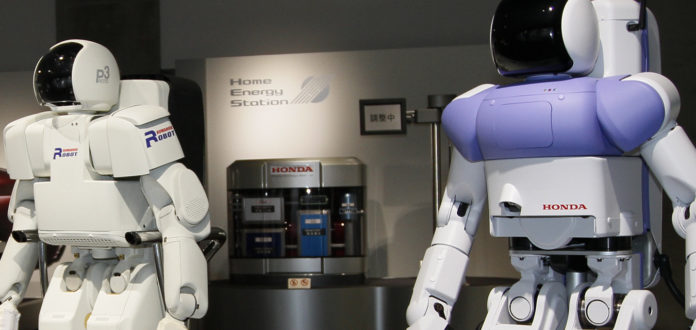Kurt Vonnegut Jr. demonstrates in his 1952 novel, “Player Piano” that the nation’s managerial classes made workers obsolete by replacing them using machines.
Goldman Sachs, an investment banker and consultant, has released a new report that suggests America does not need to wait for war. According to the corporation, America is on track to replace all human beings with metal bodies by 2030.
Every home has a humanoid
Goldman Sachs predicts that humanoid robotics will cost $6 billion by 2035.
CNBC reported that the potential growth in humanoid robotics to $152 billion was possible under Goldman Sachs’ “blue sky” scenario. All problems related to product design and use cases are solved here.
Tech censorship has been lifted from Dave Rubin’s content. You can access the Rubin Report now.
Although labor shortages might have been solved by higher wages and shifting education focus in the past, they could be remediated soon using machines like Tesla’s humanoid robotic prototype, the “Optimus.” ” ”
Elon Tesla is the CEO of Tesla. He is bullish on the market for humanoid robotics, much like Goldman Sachs.
Reuters reported Musk claimed that his robots, which he plans to build in the millions, would soon be more valuable than cars.
Musk suggests a successor for Optimus. It could be used in homes to provide care, cooking and emotional support.
It’s clear that Goldman Sachs doesn’t consider Musk’s vision too bold.
CNBC reported on the fact that Goldman Sachs sees this as an opportunity to invest in motion components, gyroscope/inertia measuring units, sensing modules (e.g. These include lidar and ultrasonic camera radar sensors.
Robots can lower wages by 0.4%, according to MIT research
In 2017, the Foundation for Economic Education put a positive spin to this trend. They suggested that outdated workers could be retrained for other departments and that automation could increase efficiency, which could lead to new jobs and pay raises.
A 2018 PricewaterhouseCoopers report indicated that nearly 40% of jobs in the U.S. were at risk of automation.
Forbes claimed that machines would complete 30% of all tasks by 2020, but only 50% by 2025.
According to the 2020 Future of Jobs Report by World Economic Forum, artificial intelligence will replace 85 million jobs and that 97,000,000 additional jobs will be created in 2025.




